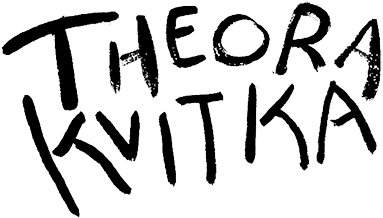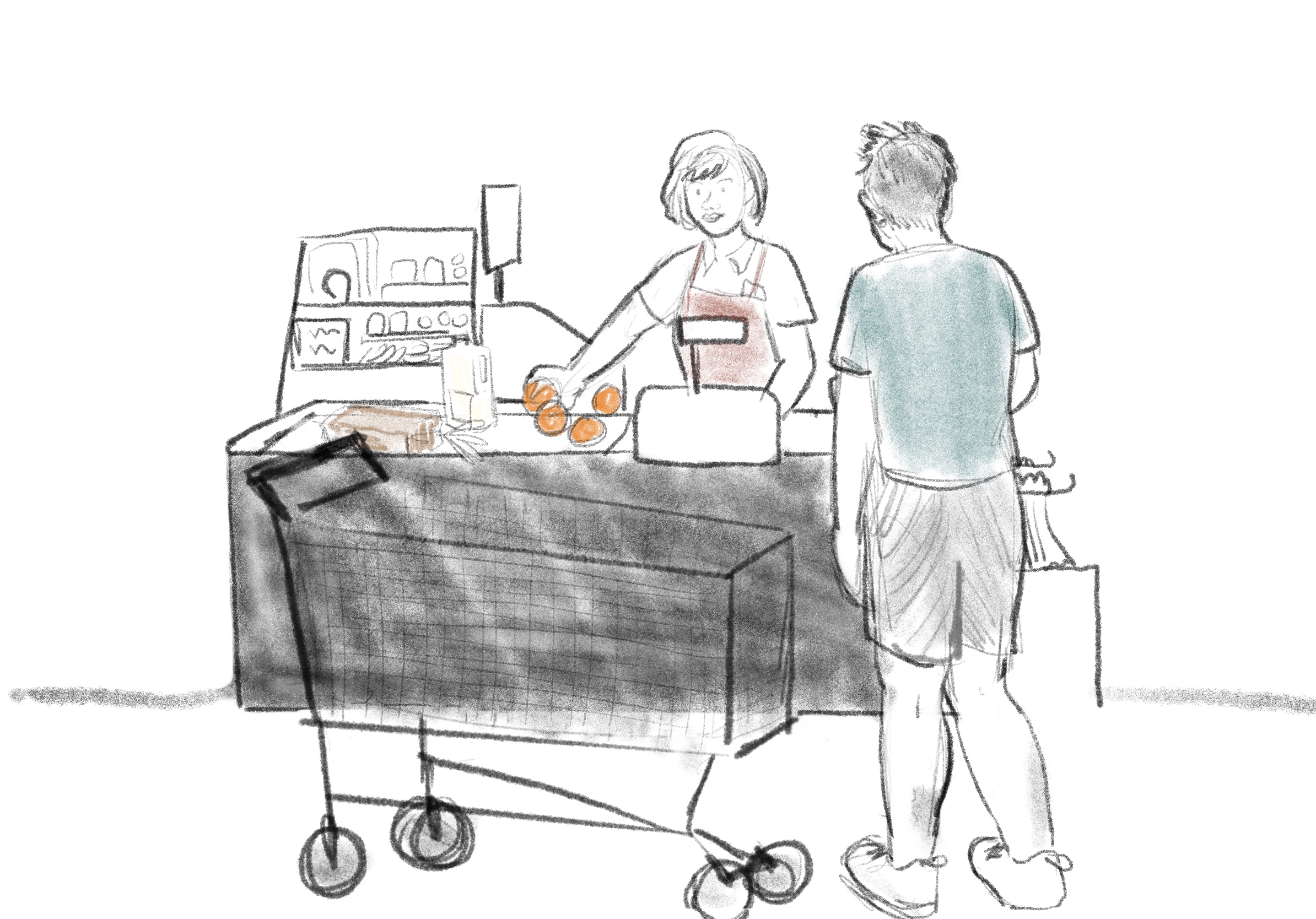
Summary
Aledade’s overly complex and siloed internal teams were offering inconsistent, unpredictable services for our customers, causing headaches and churn. Since Aledade plans to build additional similar services, we needed to quickly get our ducks in a row. Over the course of four months, myself, senior service designer, and my collaborator, an operational engineer, led a group of about 30 stakeholders in developing a framework for improved and consistent service delivery. We facilitated a series of workshops and interviews to understand the current state, identify pain points, build consensus and chart a path forward. Deliverables included a service blueprint, slide deck presentations and a ~20 page report with recommendations large and small. The impact was immediate with excitement from VPs and a fast-tracked technical solution that launched less than a year later.
Background
Aledade is a healthcare services and technology company with a mission of supporting independent primary care practices with population health management and administrative burdens so that practices can focus on taking care of their patients. I joined Aledade in April of 2023 as a Senior Service Designer assigned to our connected care division.
Project Brief
Problem statement: inconsistent rules and workflows across Aledade programs have led to headaches for practice staff, customer churn as well as increased operational overhead to engage, build, train, communicate, maintain and measure.
Practices were increasingly confused about the differences between new and existing care programs. Some were so frustrated they opted out of our programs entirely. Additionally, internal teams were tearing their hair out with no easy way to communicate or make joint decisions across programs. This was expected to get worse as additional programs were piloted and scaled.
Project goals: streamline and simplify the experience of connected care programs for practice users as well as improve communication and reduce effort for internal teams.
Metaphors
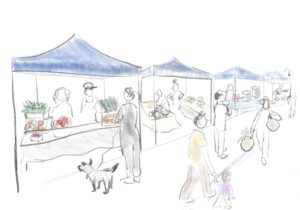
At the outset, many internal employees struggled to see why the current state was a problem and why designers needed to get involved. I illustrated a metaphor to show that programs were currently operating a bit like a farmers’ market, with each stall offering a unique experience. This is fun for a leisurely Saturday morning shopper, but too much work for a stressed practice admin who doesn’t have time to learn the ins and outs of how each vendor takes payment.
Instead, what we wanted was an experience similar to a supermarket, where all programs are delivered in a consistent manner. Practice admins need an efficient checkout lane where they can get everything they need all at once and only need to remember one set of rules.
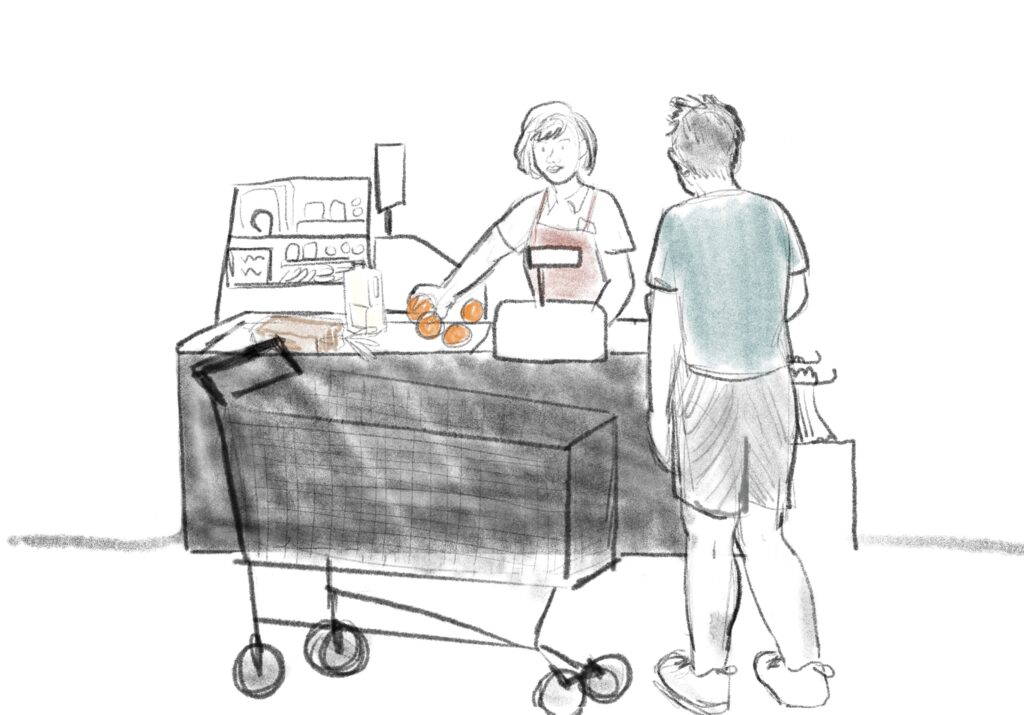
Process
Research
A draft list of current inconsistencies had been crowd-sourced in a Google doc. Natalie and I conducted a series of 1:1 interviews with employees across product, program managers, practice adoption and engagement to identify and understand the reasoning behind these inconsistencies. For example, for each program, how many phone calls were made to a patient after they were referred by their physician? Over what length of time did this calling cadence happen? Etc. We also reviewed prior Aledade UXR research conducted with practice staff to understand the end user experience.
Current state workshops
We separated out current state workshop participants by program and function. We felt that in this first round, understanding each silo individually would help us prepare to find consensus later, and allow for cathartic “design therapy” time with participants.
In each one, we collectively worked through a draft service map and added pain points, then plotted the pain points by impact and severity.

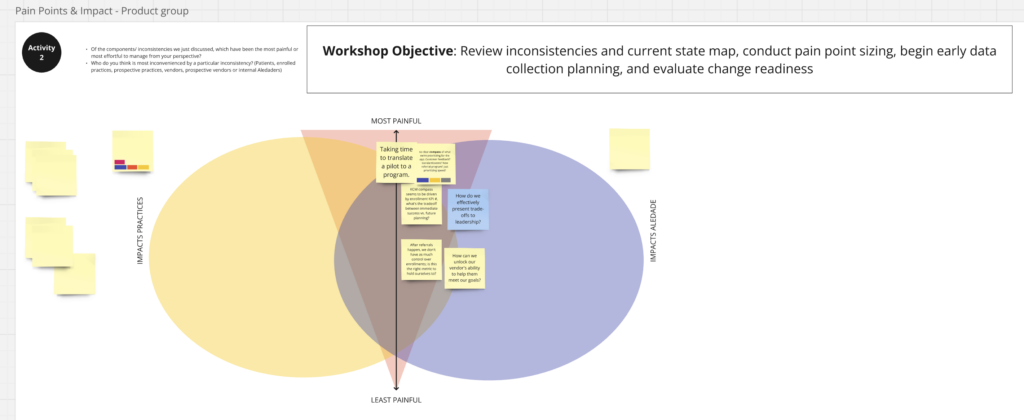
Future state workshops
Next, we brought together stakeholders across silos. We reviewed inconsistencies between the two programs and categorized the inconsistencies by type: were they driven by people, process, tooling or policy?
Next, we plotted the types to help us figure out if they should:
- Stay unique (continue the inconsistency in all cases)
- Not exist (become consistent in all cases)
- Support 2+ versions and let the practice configure as they choose
- Support 2+ versions which Aledade teams can use when appropriate
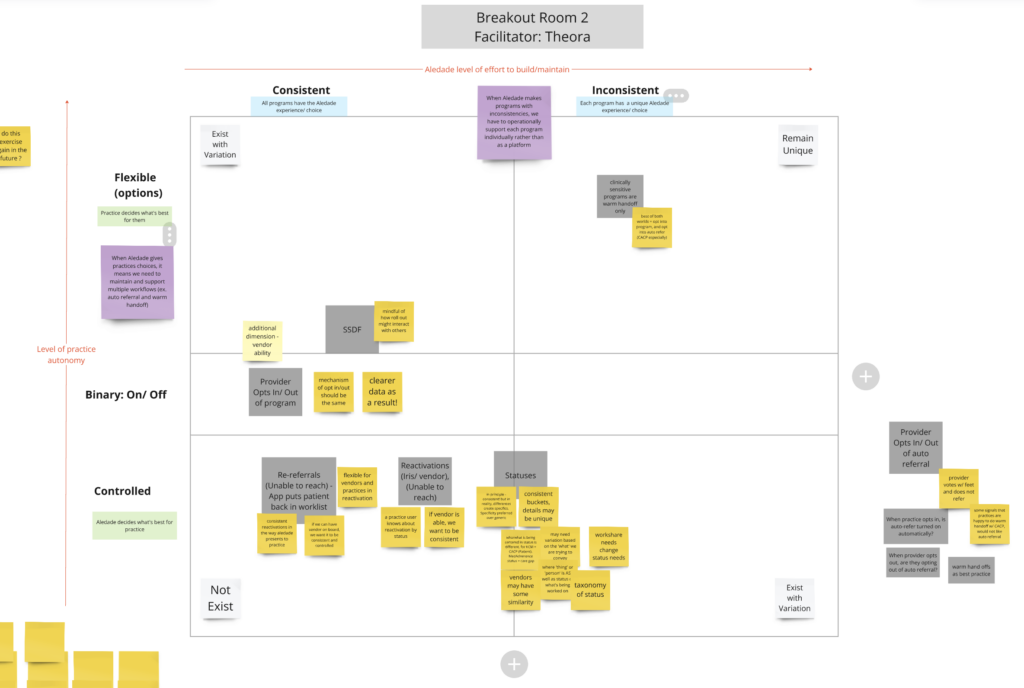
Finally, we dug into brainstorming, especially for the items where we needed to create consistency – what solutions would all parties be content with?
Synthesis and report writing
Finally, we synthesized what we heard, I polished up final maps, Natalie created a decision tree for reducing future inconsistencies, and together we wrote a ~20 page report. Our report provided recommendations spanning from leadership objectives (set KRs and prioritize program alignment) to product (combine referral worklists for end users), program management (how to encourage referrals of patients to the program) and practice-facing teams (how to communicate with practice users), etc. We also advised on improved meeting practices and overarching governance and decision-making processes.
Deliverables
We presented a final slide deck which explained our process and gave a high level summary of recommendations. Our leave behind was the detailed report which linked to a Miro board with the current state service blueprint and decision tree for future state guidance.

To socialize the recommendations and encourage action, I met with each function after report delivery to discuss the recommendations and align on paths forward.
Outcomes and impact
The division CEO and several VPs pored over our report and left many comments to one another. One very influential VP within the company, Elaine, wrote to us:
I love the direction you took this work, what you did and how you did it is a good framework for us to utilize going forward. When we have complicated issues and there is no easy answer, this was a good process. In fairness I’m not sure we can implement all recommendations as made, but you’re giving us a way forward to say “this is where you should focus, and here’s where you can do the best you can”. This gives us an actionable piece on a very complicated problem.
Product consistency
One recommendation was to develop a unified referral worklist which would house patients for all programs rather than each program developing its own new worklist. This was made a product team priority, and, less than a year after delivery of this project, is rolling out to practices across Aledade as of June 2024 (I stayed involved and ran evaluative research on the worklist).

